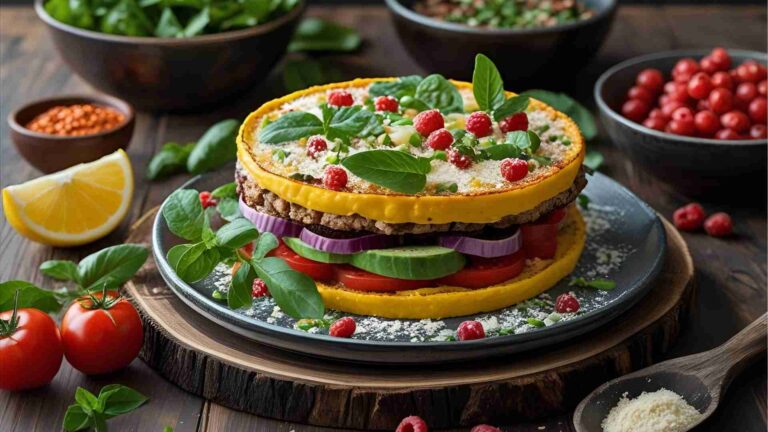Recipe Keyword Research: 9 Tips for Food Bloggers
For food bloggers, mastering search engine optimization (SEO) through effective keyword research is essential to stand out in a crowded digital kitchen. With millions of recipes online, from quick weeknight dinners to elaborate desserts, getting your content in front of the right audience requires strategy, not just culinary creativity. Keyword research helps you uncover the terms and phrases people use when searching for recipes, ensuring your blog ranks higher on search engines like Google and attracts organic traffic. This comprehensive guide dives into nine actionable tips tailored for food bloggers, designed to boost visibility, engage readers, and grow your blog’s reach—all while keeping your content authentic and valuable.
Why Keyword Research Matters for Food Bloggers
Keyword research is the backbone of SEO for food blogs. It’s about discovering what your audience is searching for and tailoring your content to meet those needs. Without it, even the most delicious recipe risks getting lost in the vast online recipe landscape. Here’s why it’s critical:
- Drives Organic Traffic: Well-chosen keywords help your recipes appear in search results, bringing visitors to your blog without relying on paid ads.
- Meets Reader Needs: Understanding search intent ensures your content aligns with what home cooks are looking for—whether it’s a 30-minute meal or a vegan dessert.
- Boosts Discoverability: Targeting niche or long-tail keywords can help smaller blogs compete with industry giants like Allrecipes or Food Network.
- Informs Content Strategy: Keyword research reveals trending ingredients, seasonal dishes, and content gaps, guiding your recipe development.
For example, Wandercooks, a food blog focused on global recipes, saw its monthly views skyrocket from 75,000 to over 600,000 in two years by leveraging deep keyword research. This kind of growth shows the power of aligning your content with what people are searching for.
9 Essential Tips for Recipe Keyword Research
Below are nine proven strategies to help food bloggers master keyword research. Each tip is practical, rooted in SEO best practices, and designed to help you attract more clicks, shares, and loyal readers.
1. Start with Basic Recipe Terms
The foundation of effective keyword research begins with understanding the core terms your audience uses. These are broad, simple phrases tied to popular dishes, ingredients, or cooking methods. Think “chocolate chip cookies,” “grilled chicken,” or “vegetable soup.”
How to Do It:
- Brainstorm Ideas: List recipes that resonate with your niche, like baking, healthy meals, or comfort food. Consider seasonal ingredients (e.g., pumpkin in fall) or trending diets (e.g., keto).
- Check Competitors: Use tools like Google Keyword Planner, SEMrush, or Ahrefs to see what keywords top food blogs in your niche target. This reveals high-traffic terms worth exploring.
- Organize Keywords: Create a table to track your findings, like this:
| Basic Recipe Term | Blog Focus | Related Keywords |
|---|---|---|
| Chocolate chip cookies | Baking | Easy cookie recipes |
| Grilled chicken | Healthy meals | Quick dinner ideas |
| Vegetable soup | Comfort food | Homemade soup recipes |
- Incorporate Terms: Use these keywords naturally in recipe titles, headings, meta descriptions, and image alt text to signal relevance to search engines.
Why It Works:
Basic terms lay the groundwork for broader SEO strategies. As one food blogger noted, “SEO keyword research helps me identify popular keywords I can weave into my recipes to reach more readers.” Starting simple ensures you’re building on a solid base.
2. Use Keyword Research Tools
Keyword research tools take the guesswork out of finding terms that drive traffic. They provide data on search volume, competition, and related phrases, helping you prioritize keywords with the best potential.
Top Tools for Food Bloggers:
Here’s a comparison of popular tools and their key features:
| Tool | Cost | Key Features |
|---|---|---|
| Google Keyword Planner | Free (with Google Ads) | Monthly search volumes, keyword suggestions, trend data |
| SEMrush | $120–$450/month | Competitor analysis, keyword difficulty, content gap identification |
| Ahrefs | $99–$999/month | Backlink analysis, keyword difficulty, long-tail keyword ideas |
| KeySearch | $17–$34/month | Affordable, beginner-friendly, keyword difficulty scores |
| Keywords Everywhere | Free browser add-on (limited) | Quick keyword data, search volume, and cost-per-click insights |
How to Use Them:
- Find High-Potential Keywords: Look for terms with decent search volume (e.g., 100–1,000 monthly searches) and low to medium competition. For instance, “pumpkin spice latte recipe” spikes in fall with manageable competition.
- Explore Long-Tail Keywords: Instead of targeting “cookies,” aim for “easy vegan chocolate chip cookies” to attract a specific audience.
- Analyze Competitors: Tools like SEMrush reveal what keywords other food blogs rank for, helping you identify gaps to fill.
User Review:
A blogger on Reddit shared, “KeySearch was a game-changer for my small food blog. It’s affordable and helped me find keywords I could actually rank for, unlike SEMrush, which felt overwhelming at first.”
Why It Works:
Tools provide actionable data to guide your content creation. Moz, an SEO authority, notes, “Keyword research tools help discover new opportunities and prioritize terms with the highest chance of success.” By using them, you ensure your recipes align with real-world search behavior.
3. Understand Reader Intent
Search intent—the “why” behind a query—is critical for creating content that resonates. Are readers looking for quick meals, dietary-specific recipes, or inspiration for special occasions? Aligning your keywords with intent ensures your recipes meet audience needs.
How to Do It:
- Analyze Search Queries: Use tools like Google’s “People Also Ask” or AnswerThePublic to see related questions. For example, “quick 30-minute meals” suggests a need for speed, while “impressive birthday cake recipes” indicates a special occasion.
- Consider Context: Map keywords to user scenarios:
| Context | Example Search |
|---|---|
| Weeknight dinner | Quick 30-minute meals |
| Special occasion | Impressive birthday cake recipes |
| Dietary needs | Low-carb vegetarian dinners |
- Monitor Trends: Platforms like Instagram and TikTok reveal trending recipes, like air fryer dishes or viral baked feta pasta.
- Engage Readers: Survey your audience or check blog comments for recipe requests to uncover unmet needs.
Real-World Example:
Pinch of Yum boosted traffic by 50% in its “Instant Pot Recipes” category after noticing a surge in searches for quick pressure cooker meals. Founder Lindsay Ostrom said, “Adapting our content to match reader demand was key to driving growth.”
Why It Works:
Understanding intent ensures your recipes solve real problems, increasing engagement and time spent on your site. Tailoring content to specific needs also improves your chances of ranking for niche queries.
4. Focus on Long-Tail Keywords
Long-tail keywords—specific, multi-word phrases like “one bowl vegan chocolate chip cookies”—are gold for food bloggers. They have lower competition and attract readers with clear intent, making them easier to rank for than broad terms like “cookies.”
How to Do It:
- Craft Descriptive Titles: Use detailed phrases, e.g., “10-Minute Mediterranean Chickpea Salad Recipe” or “Budget-Friendly Vegetarian Meal Prep Ideas.”
- Optimize Descriptions: Include long-tail keywords in recipe intros and meta descriptions to improve click-through rates.
- Use Tools: Google Keyword Planner, Ahrefs, or KeySearch can suggest long-tail variations. For example, “chocolate chip cookies” might lead to “gluten-free chocolate chip cookies for beginners.”
- Avoid Keyword Stuffing: Sprinkle keywords naturally to maintain readability.
Examples:
| Short-Tail | Long-Tail |
|---|---|
| “Cookies” | “Soft vegan chocolate chip cookies” |
| “Salad” | “High-protein Greek salad meal prep” |
Why It Works:
Long-tail keywords target niche audiences who are more likely to engage with your content. A study by Ahrefs found that long-tail terms often drive higher conversion rates due to their specificity. For food bloggers, this means more clicks from readers ready to cook your recipe.
5. Target Seasonal and Trending Topics
Seasonal ingredients and food trends are powerful opportunities to capture timely traffic. From pumpkin spice in fall to grilling recipes in summer, aligning your content with what’s hot keeps your blog relevant.
How to Do It:
- Use Seasonal Ingredients: Create recipes featuring in-season produce, like strawberries in spring or root vegetables in winter.
- Follow Trends: Experiment with viral dishes, like Dalgona coffee or baked oats, spotted on TikTok or Pinterest.
- Plan for Holidays: Target holiday-specific searches, e.g., “Thanksgiving stuffing recipes” or “Christmas cookie ideas.”
- Leverage Google Trends: Identify rising search terms, such as “keto desserts” or “air fryer recipes.”
| Season | Popular Keywords |
|---|---|
| Fall | “Pumpkin spice latte,” “apple crisp” |
| Winter | “Christmas cookies,” “hearty stews” |
| Summer | “Grilled corn salad,” “ice cream recipes” |
Data Insight:
A survey by The Kitchn found that 54% of home cooks prioritize quick, time-saving meals, while 43% seek recipes under 30 minutes. Editor Collette Reitz noted, “Budget-friendly meals with trending ingredients are key to engaging readers.”
Why It Works:
Timely content matches what readers are actively searching for, boosting visibility. Planning around seasons and trends also keeps your blog fresh and engaging.
6. Analyze Competitor Strategies
Studying other food blogs reveals what works—and what’s missing. By analyzing competitors, you can find content gaps to fill and keywords to target.
How to Do It:
- Identify Top Blogs: Find leading blogs in your niche, like vegan baking or Italian cuisine.
- Examine Keyword Use: Look at their titles, headings, and recipe descriptions to spot high-performing keywords.
- Find Gaps: Identify topics they’re not covering, such as niche diets (e.g., paleo) or unique twists (e.g., savory cupcakes).
- Inspire, Don’t Copy: Use insights to create original content with your unique voice.
Blogger Insight:
Sally McKenney of Sally’s Baking Addiction said, “We watch other bloggers for inspiration but always add our own twist. It’s about standing out, not blending in.”
Why It Works:
Competitor analysis helps you learn from success without reinventing the wheel. It also uncovers opportunities to differentiate your blog and capture untapped audiences.
7. Optimize for Voice Search
With voice assistants like Siri and Alexa on the rise, optimizing for voice search is a smart move. Voice queries are often longer and conversational, like “How do I make chocolate chip cookies without eggs?”
How to Do It:
- Use Natural Language: Include question-based phrases, e.g., “What’s the best way to bake gluten-free bread?”
- Add FAQ Sections: Answer common questions in your posts, like:
| Question | Answer |
|---|---|
| How long to bake chocolate chip cookies? | 10–12 minutes at 350°F for soft cookies. |
| Can I use margarine instead of butter? | Yes, but it may alter texture. Use equal amounts. |
- Go Local: Include regional terms, e.g., “New Orleans gumbo recipe,” as voice searches often seek local flavors.
- Ensure Mobile-Friendliness: Use Google’s PageSpeed Insights to optimize site speed for mobile users.
- Implement Schema Markup: Add recipe schema to help search engines understand your content, increasing chances of appearing in voice results.
Why It Works:
A 2019 study found 70% of voice search results come from featured snippets. Optimizing for conversational queries positions your blog to capture this growing audience.
8. Incorporate Local and Regional Terms
Local and regional keywords connect your recipes to specific audiences, boosting relevance for geographically targeted searches.
How to Do It:
- Use Regional Dish Names: Highlight terms like “Philly cheesesteak” or “Southern cornbread.”
- Leverage Local Ingredients: Feature area-specific produce, e.g., “Hatch chile salsa” for New Mexico.
- Include Cultural Terms: Use authentic names, like “poutine” for Canadian dishes or “biryani” for Indian cuisine.
- Target Local Events: Create content for regional holidays, e.g., “Mardi Gras king cake recipe.”
Example Table:
| Food Item | Northeast US | Southern US | Midwest US | West Coast US |
|---|---|---|---|---|
| Soft Drink | Soda | Coke | Pop | Soda |
| Sandwich | Hero | Po’ boy | Sub | Sandwich |
| Pancake | Flapjack | Hotcake | Pancake | Griddle cake |
Why It Works:
Local terms resonate with readers seeking familiar flavors, improving engagement and relevance. They also help you rank for niche, location-specific searches.
9. Track and Refine Your Strategy
Keyword research isn’t a one-time task—it’s an ongoing process. Tracking performance helps you identify what’s working and where to improve.
How to Do It:
- Use Analytics Tools: Monitor metrics with Google Search Console, Ahrefs, or SEMrush. Key numbers include:
| Metric | What It Means | Why It Matters |
|---|---|---|
| Click-Through Rate (CTR) | % of people clicking your link after seeing it | Indicates title/description effectiveness |
| Impressions | Times your recipe appears in searches | Shows visibility in search results |
| Clicks | Number of clicks on your recipe | Reflects reader interest |
| Keyword Rankings | Position in search results | Tracks SEO performance |
- Set Goals: Aim for specific outcomes, like increasing traffic by 20% or ranking in the top 10 for five new keywords.
- Update Old Content: Refresh older recipes with trending keywords to maintain relevance.
- Experiment: Test new keywords and monitor results to find what resonates.
Why It Works:
Regular tracking ensures your strategy evolves with search trends and audience behavior. It also maximizes the value of existing content, as updating old posts can double or triple traffic, as seen in Wandercooks’ case.
Tools to Supercharge Your Keyword Research
Beyond the basics, integrating specialized tools can elevate your SEO game. Here are two standout options for food bloggers:
WP Recipe Maker
- Price: Starts at $49/year for a single site.
- Features: Creates SEO-optimized recipe cards with structured data, supports rich snippets, and offers customizable fields like nutrition info and video markup.
- Why It’s Great: Enhances user experience with jump-to-recipe buttons and star ratings, while boosting search visibility.
- User Review: A blogger on X said, “WP Recipe Maker made my recipes pop in search results. The structured data is a lifesaver for ranking higher!”
Tasty Recipes
- Price: $79/year for up to three sites.
- Features: SEO-friendly recipe cards, customizable designs, and integrations like jump-to-recipe and print options.
- Why It’s Great: Simplifies adding keywords to recipe cards, improving both SEO and reader engagement.
- User Review: “Tasty Recipes streamlined my workflow. My readers love the clean layout, and I’ve seen a traffic bump since using it,” shared a Reddit user.
Both plugins are worth the investment for serious bloggers, offering risk-free trials (14-day money-back for Tasty Recipes).
Common Pitfalls to Avoid
- Keyword Stuffing: Overusing keywords makes content unnatural and risks penalties from Google. Aim for a 2% keyword density or less.
- Ignoring Intent: Targeting high-volume keywords without considering user needs leads to low engagement.
- Neglecting Updates: Old posts lose relevance without refreshed keywords and content.
- Copying Competitors: Imitating others’ strategies verbatim sacrifices originality and authenticity.
FAQs: Food Blog Keyword Research
How Often Should I Update My Keywords?
- Monthly: Review top posts for keyword performance.
- Quarterly: Analyze seasonal trends and refresh relevant recipes.
- Annually: Conduct a full content audit to update keywords site-wide.
Can I Compete with Big Recipe Sites?
Yes! Focus on long-tail keywords, niche topics, and high-quality content. Smaller blogs often rank well by addressing specific intents that giants overlook.
Is Keyword Research Enough for SEO Success?
No, it’s one piece of the puzzle. Backlinks, site speed, user experience, and topical authority also matter. Use keyword research alongside other SEO tactics for best results.
Conclusion: Cook Up SEO Success
Keyword research is a game-changer for food bloggers aiming to grow their audience and rank higher on Google. By starting with basic terms, leveraging tools, understanding intent, and targeting long-tail, seasonal, and local keywords, you can carve out a space in the competitive food blogging world. Analyzing competitors, optimizing for voice search, and tracking performance ensure your strategy stays sharp, while tools like WP Recipe Maker and Tasty Recipes amplify your efforts.
The journey doesn’t end with publishing a post—SEO is an ongoing process. Keep experimenting, updating, and learning from your data to stay ahead of trends and algorithm changes. As Pinch of Yum and Wandercooks have shown, thoughtful keyword research can transform a modest blog into a traffic powerhouse.
So, grab your tools, roll up your sleeves, and start cooking up content that not only tastes great but also ranks great. Your next viral recipe is just a keyword away.
Please share this Recipe Keyword Research: 9 Tips for Food Bloggers with your friends and do a comment below about your feedback.
We will meet you on next article.
Until you can read, How to Make Recipe Cards and Free Templates





